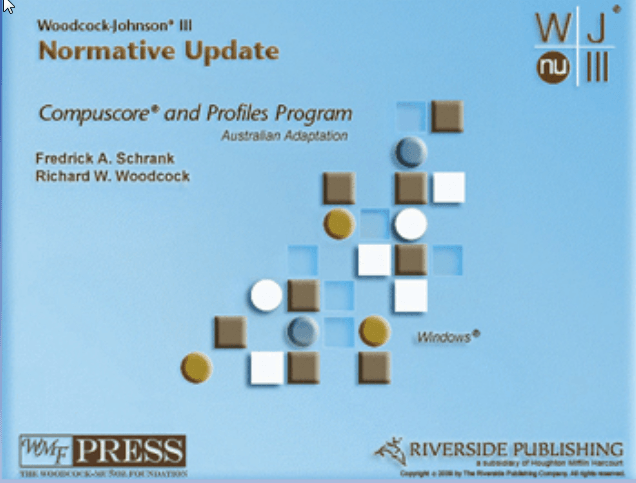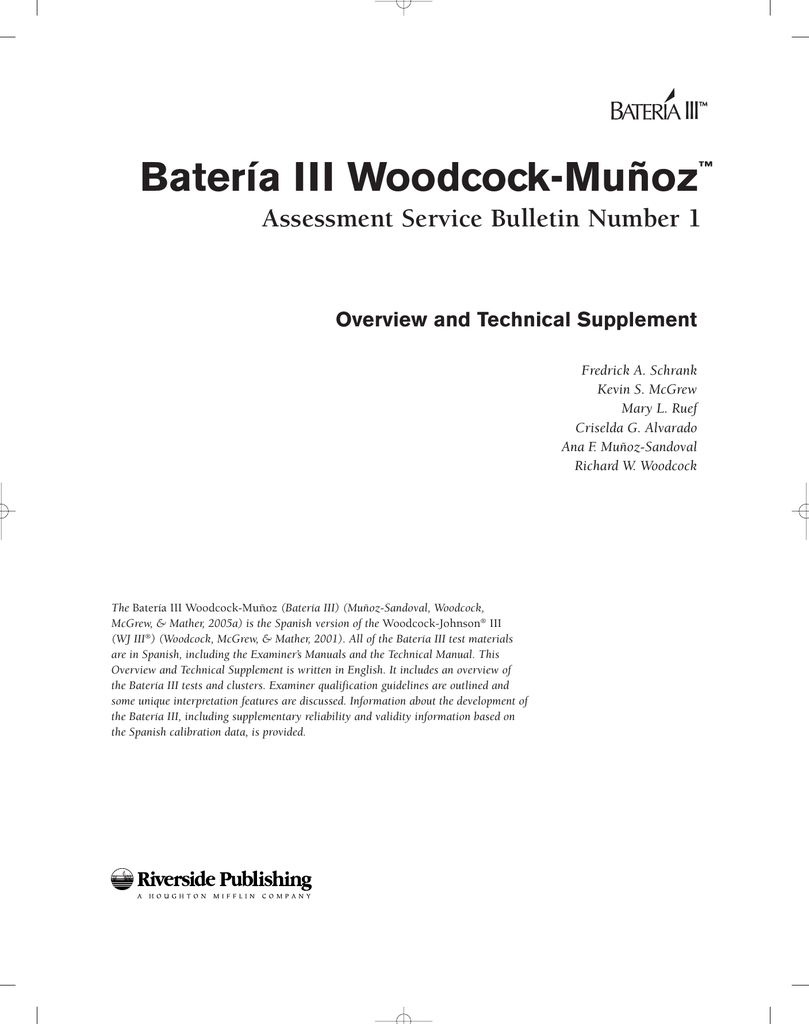The WJ-IV Achievement includes new two-test Reading, Mathematics, and Written Language clusters. New Oral Reading, Reading Speed, and Reading Comprehension tests are also included. The new Number Matrices test adds a richer, in-depth interpretation of math problem-solving ability. WJ-IV includes an all-new Oral Language battery.
- Woodcock Johnson Compuscore And Profiles Programme
- Woodcock Johnson Iii Compuscore And Profiles Program
- Woodcock Johnson Compuscore And Profiles Programming
& Mather, 2001, 2007) is a recalculation of the normative data for the Woodcock-Johnson III (WJ III) (Woodcock, McGrew, & Mather, 2001), based on the final 2000 U.S. Census statistics (U.S. Census Bureau, 2005). The final 2000 census data are reflected in the norms provided by the WJ III Normative Update Compuscore® and Profiles Program.
Woodcock-Johnson IV (WJ IV) Woodcock-Munoz Language Survey III (WMLS III). WJ IV Interpretation and Instructional Interventions Program (WIIIP). Woodcock-Johnson III: Tests of Achievement: Cluster Descriptions and Scores Bell Curve Cluster/Test Comparison Chart Developmental Band Profile Worksheet-WJ III Tests of Cognitive Abilities Instructional Zone Profile Worksheet-WJ III Tests of Achievement WJ III Tests of Cognitive Abilities: Standard Score/Percentile Rank Profiles-Tests. Trusted Windows (PC) download WJ III Compuscore and Profiles Program 2.1. Virus-free and 100% clean download. Get WJ III Compuscore and Profiles Program alternative downloads. You need to enable JavaScript to run this app.

The new Tests of Oral Language is an important diagnostic supplement to the WJ-IV Achievement Batteries, and provides measures of oral language, phonetic coding, and speed of lexical access for a more comprehensive achievement evaluation.
PLEASE NOTE:

To purchase the WJ-IV Test of Achievement (available at http://www.riversidepublishing.com) you must have a Bachelor’s degree in an educational field (e.g. education, psychology, speech therapy, occupational therapy, counseling, etc). For more information, contact Riverside Publishing at 630-467-7000 or complete their Test Purchaser Qualification Form at Click HERE. You do not need to purchase the Test prior to taking the workshop and there is no need to bring these materials with you to the training. The above information is for your benefit after you complete the training.


Woodcock Johnson Compuscore And Profiles Programme
This workshop is designed to provide NILD educational therapists training in administration, scoring and interpretation of the WJ-IV Tests of Achievement and Oral Language. The content focuses on theoretical background, technical overview, basal and ceiling rules, computing raw scores, obtaining estimated and grade-equivalent scores, administration of new tests, using Compuscore and Profiles Program and building examiner competency.
Woodcock Johnson Iii Compuscore And Profiles Program
A Bachelor’s degree in an educational field (e.g. education, psychology, speech therapy, occupational therapy, counseling, etc.) is required.

PLEASE NOTE:
To purchase the WJ-IV Test of Achievement (available at www.riversidepublishing.com) you must have a Bachelor’s degree in an educational field (e.g. education, psychology, speech therapy, occupational therapy, counseling, etc). For more information, contact Riverside Publishing at 630-467-700. You do not need to purchase the Test prior to taking the workshop and there is no need to bring these materials with you to the training. The above information is for your benefit after you complete the training.
Woodcock Johnson Compuscore And Profiles Programming
Uses, Value, Strengths and Weaknesses, and Professional Commentary in Literature
Along with the already clear and precise guidelines for the Woodcock-Johnson III NU Tests of Cognitive Abilities, seven new features have been added to the tests. In the Woodcock-Johnson III NU Tests of Cognitive Abilities, it includes eight new tests, which measure information-processing abilities. These tests include ones which measure working memory, planning, naming speed, and attention. Also included in this version are five new cognitive clusters. Of these five clusters, there are also two additional clusters that are available when cognitive and achievement batteries are used together. Included in the tests that is helpful are interception plans and modified organization;...
... middle of paper ...
...abilities. Psychology in the Schools, 47(7), 721-738.
Jones, W. P., Loe, S. A., Krach, S. K., Rager, R. Y., & Jones, H. M. (2008). Automated Neu ropsychological Assessment Metrics (Anam) and Woodcock-Johnson III Tests of Cogni tive Ability: A Concurrent Validity Study. Clinical Neuropsychologist, 22(2), 305-320. doi: 10.1080/13854040701281483.
Keith, T. Z., Kranzler, J. H., & Flanagan, D. P. (2001). What Does the Cognitive Assessment System (CAS) Measure? Joint Confirmatory Factor Analysis of the CAS and the Wood cock-Johnson Tests of Cognitive Ability (3rd Edition). School Psychology Review, 30(1), 89 & 31.
Kranzler, J. H., Flores, C. G., & Coady, M. (2010). Examination of the Cross-Battery Approach for the Cognitive Assessment of Children and Youth From Diverse Linguistic and Cultur al Backgrounds. School Psychology Review, 39(3), 431-446.